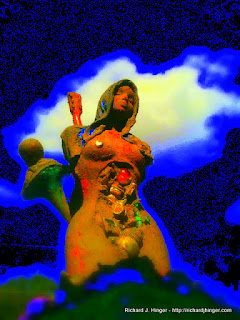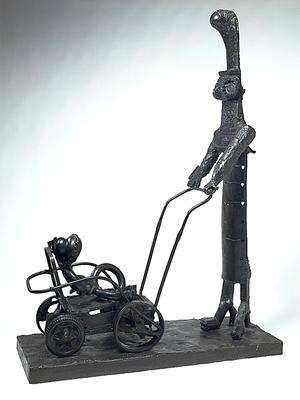Found art derives its identity as art from the designation placed upon it by the artist. The context into which it is placed (e.g. a gallery or museum) is usually also a highly relevant factor. The idea of dignifying commonplace objects in this way was originally a shocking challenge to the accepted distinction between what was considered art as opposed to not art. Although it may now be accepted in the art world as a viable practice, it continues to arouse questioning, as with the Tate Gallery's Turner Prize exhibition of Tracey Emin's My Bed, which consisted literally of her unmade and dishevelled bed. In this sense the artist gives the audience time and a stage to contemplate an object. Appreciation of found art in this way can prompt philosophical reflection in the observer.
Found art, however, has to have the artist's input, at the very least an idea about it, i.e. the artist's designation of the object as art, which is nearly always reinforced with a title. There is mostly also some degree of modification of the object, although not to the extent that it cannot be recognised. The modification may lead to it being designated a "modified", "interpreted" or "adapted" found object

The most prominent example of Duchamp's association with Dada was his submission of Fountain, a urinal, to the Society of Independent Artists exhibit in 1917. Artworks in the Independent Artists shows were not selected by jury, and all pieces submitted were displayed. However, the show committee insisted that Fountain was not art, and rejected it from the show. This caused an uproar amongst the Dadaists, and led Duchamp to resign from the board of the Independent Artists

Joseph Cornell Untitled (Dieppe) c. 1958,
Museum of Modern Art, (New York City)
RJH







